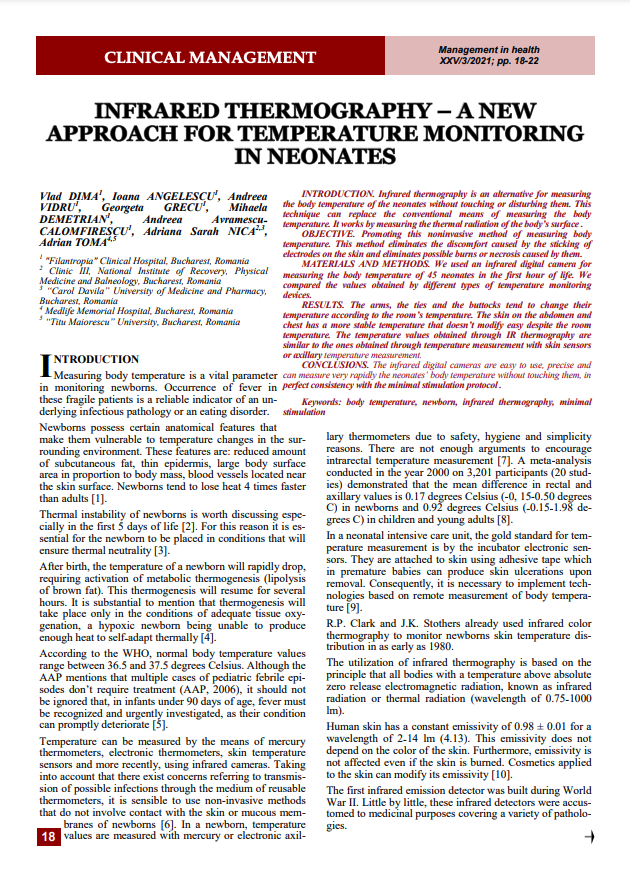Abstract
INTRODUCTION. Infrared thermography is an alternative for measuring the body temperature of the neonates without touching or disturbing them. This technique can replace the conventional means of measuring the body temperature. It works by measuring the thermal radiation of the body’s surface .
OBJECTIVE. Promoting this noninvasive method of measuring body temperature. This method eliminates the discomfort caused by the sticking of electrodes on the skin and eliminates possible burns or necrosis caused by them.
MATERIALS AND METHODS. We used an infrared digital camera for measuring the body temperature of 45 neonates in the first hour of life. We compared the values obtained by different types of temperature monitoring devices.
RESULTS. The arms, the ties and the buttocks tend to change their temperature according to the room’s temperature. The skin on the abdomen and chest has a more stable temperature that doesn’t modify easy despite the room temperature. The temperature values obtained through IR thermography are similar to the ones obtained through temperature measurement with skin sensors or axillary temperature measurement.
CONCLUSIONS. The infrared digital cameras are easy to use, precise and can measure very rapidly the neonates’ body temperature without touching them, in perfect consistency with the minimal stimulation protocol .

